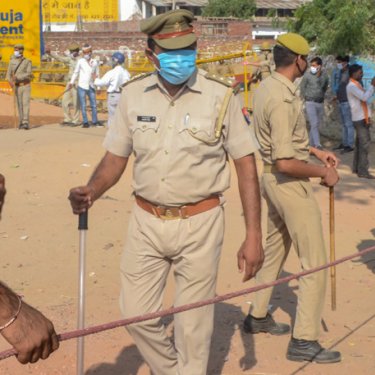Sedition charge against Indian reporter symptomatic of difficulties facing journalists in Uttar Pradesh

New Delhi-based journalist Siddique Kappan was arrested and remanded in custody for 14 days as he was on his way to cover the Hathras gang rape case this week. Reporters Without Borders (RSF) demands his immediate release and calls for an end to the obstacles preventing reporters from covering this public interest case.
Siddique Kappan, the New Delhi correspondent for several Malayalam-language news outlets, was arrested on Monday this week at a toll booth in Mathura in the northern state of Uttar Pradesh. He was charged with sedition and could face life imprisonment.
He appeared before a judge on Wednesday and was remanded in custody for 14 days. According to the sedition allegations, he was accused of raising funds for terrorist acts, promoting enmity between groups and outraging religious feeling. He was also accused of conspiracy to defame the state government.
As confirmed by his editor, he was reporting for the Azhimukham news website and was on his way with three others to the crime scene in Hathras district, about 40 km from Mathura.
Horrific case
The name of Hathras has become notorious in the country as the location of the horrific gang rape and murder of a 19-year-old girl from the Dalit caste on 14 September.
“It’s clear to us that the allegations against Siddique Kappan are intended to prevent him from doing his work,” said Daniel Bastard, the head of RSF’s Asia-Pacific desk. “Even worse, his arrest is a chilling message from the Uttar Pradesh police to all reporters: there are matters you should not investigate and it will cost you dear if you do so. Siddique Kappan must be released immediately and journalists must be allowed to freely investigate the Hathras rape case.”
The young victim died of her injuries on 29 September and her body was cremated with gasoline in the middle of a field during the night of 30 September by Uttar Pradesh police who prevented the family from recovering her body to carry out funeral rites in accordance with the practices of their community. It seems that the police wanted to destroy all evidence.
Conspiracy allegation
The following day, the additional director general of police stated that the victim had not been raped. He accused media organizations covering the case of complicity in a “conspiracy” and being part of an international plot to instigate riots along caste lines.
The day before Kappan was arrested, the state police lodged a First Information Report against unspecified journalists, accusing them of conspiracy to defame the government. It contained 19 separate charges, from sedition to criminal conspiracy and attempting to promote violence between castes.
The complaint was symptomatic of the machinations to prevent news organizations from covering the case. The Uttar Pradesh authorities imposed a curfew in the village where the victim’s family lived. The police cordoned off the area, keeping all reporters out.
Like a gag
One noted journalist, Barkha Dutt, tweeted that she tried to get around the police cordon by walking several kilometres through fields before being picked up by police and driven out of the no-go area.
According to the TV station India Today, the Uttar Pradesh authorities also hacked the telephone of its reporter Tanushree Pandey, leaking conversations she had had with the murdered girl’s family in an attempt to discredit her.
“The ban on media from entering the village was very much like a gag” said Saurabh Sharma, a Lucknow-based independent journalist, adding that no government official was willing to make a statement.
The Hathras rape case highlights the growing difficulties reporters based in Uttar Pradesh are experiencing in the course of their work.
Underhand tactic
“Firstly, it is not possible to get any statement from the government officials, forcing you to go ahead without their quotes,” said one journalist who asked not to be identified. “And once the story is out, they come after you.”
He is describing an underhand practice by which government officials refuse to make a statement then bring a complaint against reporters whom they accuse of not taking their position into account.
He has a point: “The authorities did not cooperate with journalists regarding the official quotes,” said Sharma. “We kept calling government officials, in vain.”
At the start of the Covid-19 crisis in March, RSF disclosed that two Uttar Pradesh journalists, Vijay Vineet and Subhash Rai, were unjustly accused of spreading fake news by a district mayor after they reported on the effects of the lockdown on the most vulnerable sections of the population.
Five-year sentence
On 1 April, the independent news website The Wire was accused of publishing fake news about Chief Minister Yogi Adityanath, and its editor Siddharth Varadarajan was prosecuted for, among other things, disobeying “an order duly promulgated by a public servant”. He could face up to five years in prison.
On 18 May, Chief Minister Adityanath brought a complaint against Ravindra Saxena, a reporter for the Today-24 news website, over a video report on a quarantine centre in Sitapur district which angered the authorities.
India is ranked 142nd out of 180 countries in RSF's 2020 World Press Freedom Index.



